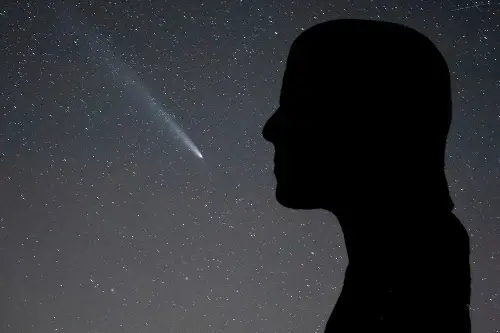
Telescopes in space have provided stunning new images of Comet A3, the so-called “comet of the century”.
The object – which has the full name C/2023 A3 (Tsuchinshan–ATLAS) – was found last year but in recent weeks has passed close enough to Earth that it could be seen with the naked eye. The comet visits our solar system about every 80,000 years, meaning that it has not been seen from Earth since the Neanderthals were around.
A3’s bright look and clear visibility in the sky led to it being described as the “comet of the century” and led to a frenzy of skywatching as people looked to spot it.
Now it has also been examined by instruments operated by the US Naval Research Laboratory, using equipment that is generally used to watch the Sun. The Large Angle and Spectrometric Coronagraph telescope is floating between the Sun and the Earth, having been launched in 1995.
As the comet flew through the solar system, Comet A3 went almost directly between the Sun and the spacecraft. That meant that it could be seen with the telescope, which was able to watch its brightness increase and the dust around it get lit up.
At one point, the spacecraft was able to see the comet from its edge, and then lit up the whole view from the telescope. That marked a view of comet dust that the telescope had not seen before.
“LASCO has seen many beautiful comet transits during its decades of operations, but seeing a side-on view of a comet’s dust plane absolutely ranks as one of the most spectacular that we have seen,” said NRL scientist and LASCO Principal Investigator Karl Battams.
The comet’s lucky lighting meant that it was the second brightest comet ever seen. “We knew this comet was going to be bright, but the extremely fortuitous viewing geometry here has led to a truly spectacular sequence of images,” said Dr Battams.
The comet is still visible to the naked eye for now, and it can be seen shortly after sunset by people in the northern hemisphere. It will gradually make its way into the northern skies and then fade, though it should still be visible through binoculars for some weeks.
Eventually, the object will fly back to the Oort Cloud, the ring of comets at the edge of our solar system from which it first came. Eventually it will probably fly so far that it leaves our solar system entirely, scientists say.
© Independent Digital News & Media Ltd